
Jimmy Longoria's Favorite Things About Minnesota
Jimmy Longoria's Favorite Things About Minnesota
By Andrew Parks
It only took Jimmy Longoria — a South Texas native who studied art in Chicago and California — three months to realize he was going to spend the rest of his life in Minnesota. Having moved here during the hottest days of August, he was struck by how normal a November blizzard suddenly felt. Actually, make that surreal; after all, he was walking his dog in a pair of boxers and a parka at the time.
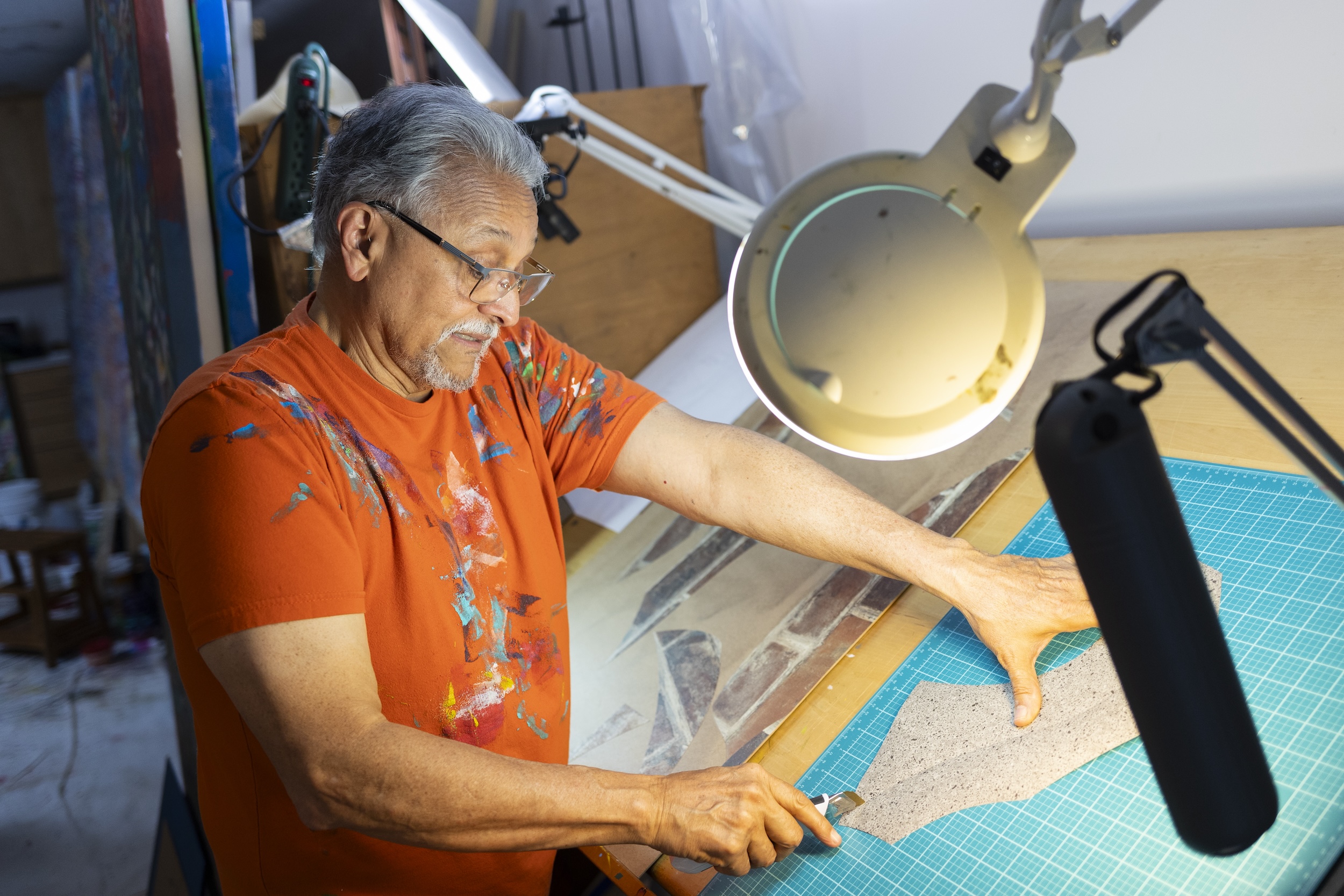
Artist Jimmy Longoria works with material from 3M / Credit: Liam James Doyle
“People who live here are kind of strange,” Longoria says with a smile. “It gets so cold you can't breathe, and they’ll go out in their shorts. When I did it, I went, ‘Oh crap, I think I’m going to stay here.'"
Of course, it didn’t hurt that Longoria quickly carved out his own corner of the local art scene — a singular approach to painting built on vibrant blends of stacked brush strokes and the visionary myths of the Chicano movement. It’s so unique, in fact, that his pieces have landed in the personal collections of everyone from actor/comedian Cheech Marin to Supreme Court Justice Sonia Sotomayor.
Not to mention the industry leading Innovation Center of the cutting-edge St. Paul company 3M. (The company let him create thought-provoking pieces from materials typically used for window treatments, street signs and resurfaced walls.)
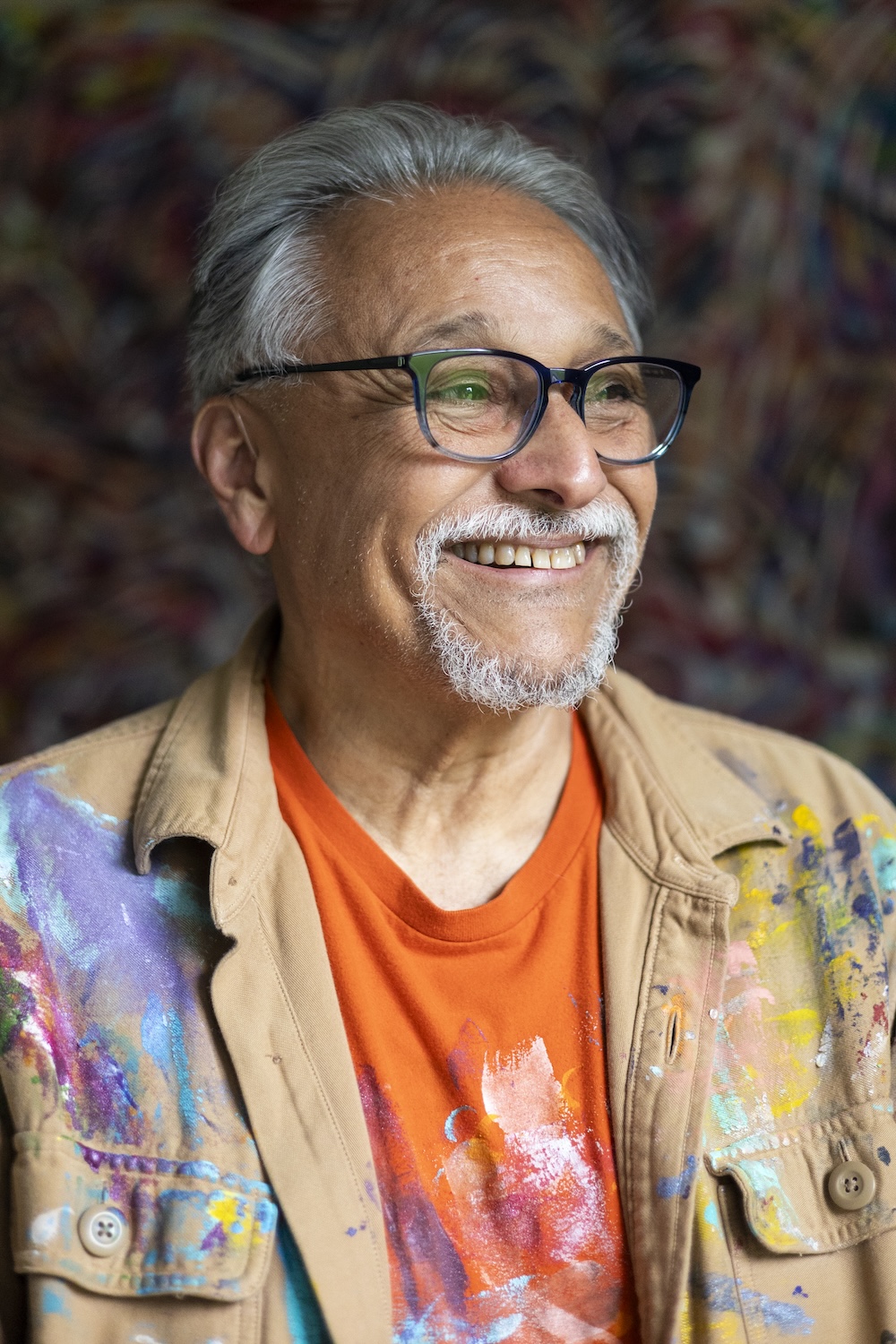
Artist Jimmy Longoria in his Oak Park Heights studio / Credit: Liam James Doyle
“Chicanos are the future,” explains Longoria. “We are what happens when Indigenous and Western — Hispanic and Anglo — cultures collide. That intermixing creates an entirely new culture that refuses to be part of the past.... Welcome to the surrealness of Minnesota.”
In the following interview, Longoria shares the many reasons his love for Minnesota hasn’t waned between 1988 and now; everything from palate-expanding restaurants to the retirement community that’s helped Longoria strike the perfect work/live balance as he heads into his 70s as busy as he’s ever been.
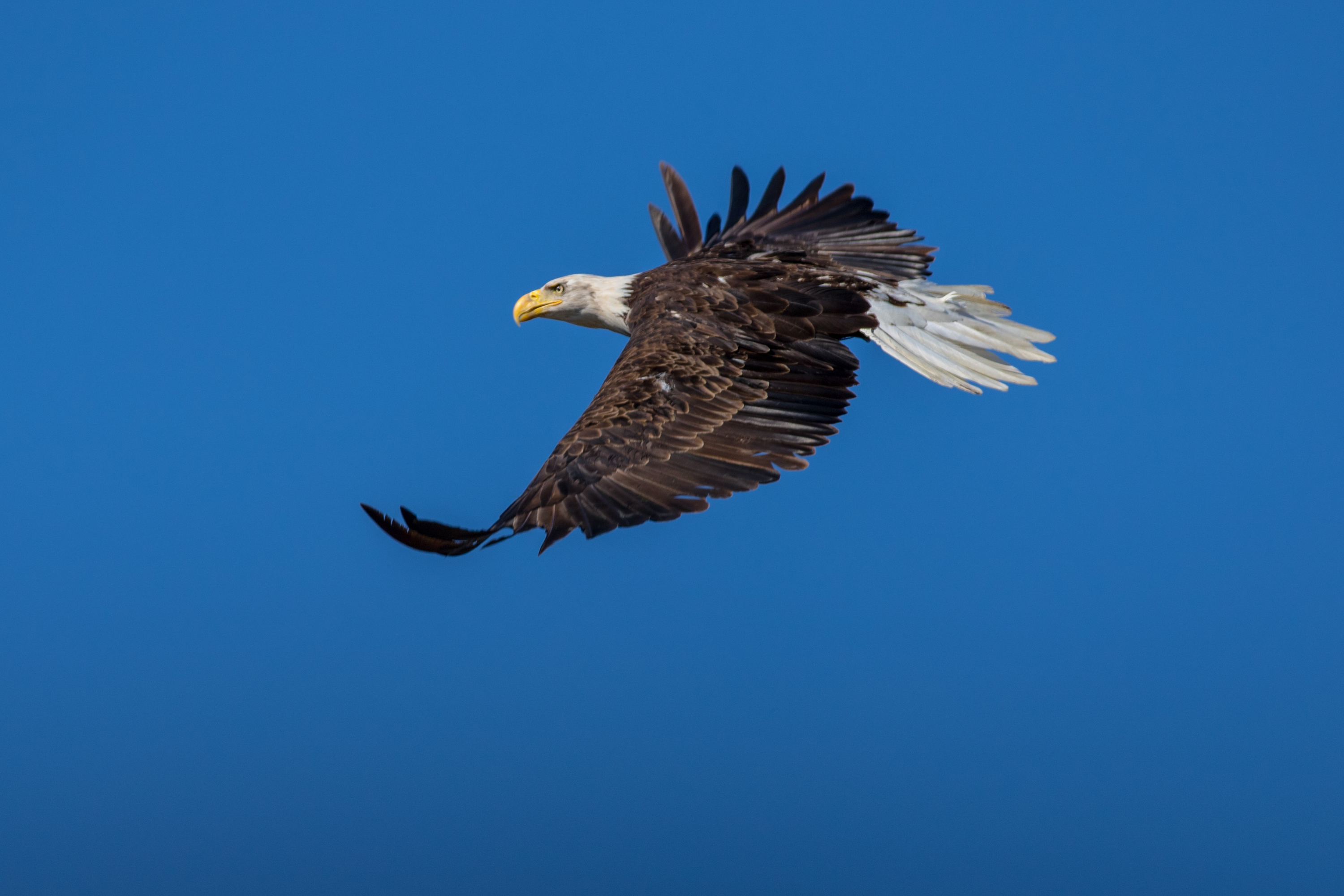
One of the many bald eagles you might find in Minnesota / Credit: Steve Allen
On never being far away from nature:
We live in a retirement community that sits in an old Christmas tree farm, so it has this weird landscape and one of the best trails around. In fact, our neighbors who aren't retired citizens use them. The city has a green space next to it, so we have a park with water features, and these great trails with woods.
The magic of Minnesota is you're not very far away from a natural environment that gives you a subtle experience of what's real. Coyotes run through our backyard, and if you pay attention, you realize there's shifts with different animals during the day.
We'll get up in the morning, and it's the dawn patrol — a small sparrow hawk flying through our backyard on its morning route. A couple hours later, a brown hawk comes through, and he's after the bigger birds — particularly the robins and the doves. Then later on in the afternoon, the eagle comes by, and everybody else has to watch out.
When I first came here, I lived out by Elk River, and it was very interesting, because the first thing you do when you meet people is say 'what do you guys do for entertainment?' And they were like, 'Oh, we watch the eagles,' or 'we watch the deer.' I get it now.

Northern lights over the Gunflint Trail / David Johnson
On gratuitious levels of green:
When you look outside, you realize Minnesota has a gazillion shades of green. The part of me that's a technician goes in there like, 'Okay, what is green?' And in Minnesota, the green in the morning is different than the green at noon and the green in the evening. It leaves you wondering what is, in fact, green?
One of the beauties of moving around in Minnesota are the vistas. As plain and simple as they may be, they’re still astounding. Because you get a combination of deciduous and pine trees that's very different than other areas in the U.S.

River Bluffs Regional Park / Credit: Super Cooper Media, Courtesy of Visit Greater St. Cloud
On seizing all four seasons:
When I got here, people said, ‘If you don’t like our weather, stick around.’ And they were right; it does change.
If you abstract our lives, it's surreal. One day it's almost 100 degrees with humidity. And the next day, you're looking at frost.
Now it's even more interesting. You'll have a December with virtually no snow. The last two years have been like that.

A family fishing along the Mississippi River in St. Paul / Credit: Stan Borowicz
On our love of water:
The big thing about Minnesota is you can find water anywhere.
My main water sport is tossing a lure out. I'll drive around and see cars parked next to a body of water, and just be like, 'Hey, what are you guys doing?'
And they're out there throwing the plug. They're not really trying to catch anything. It's an excuse to stand next to a body of water. It's a Minnesota thing.
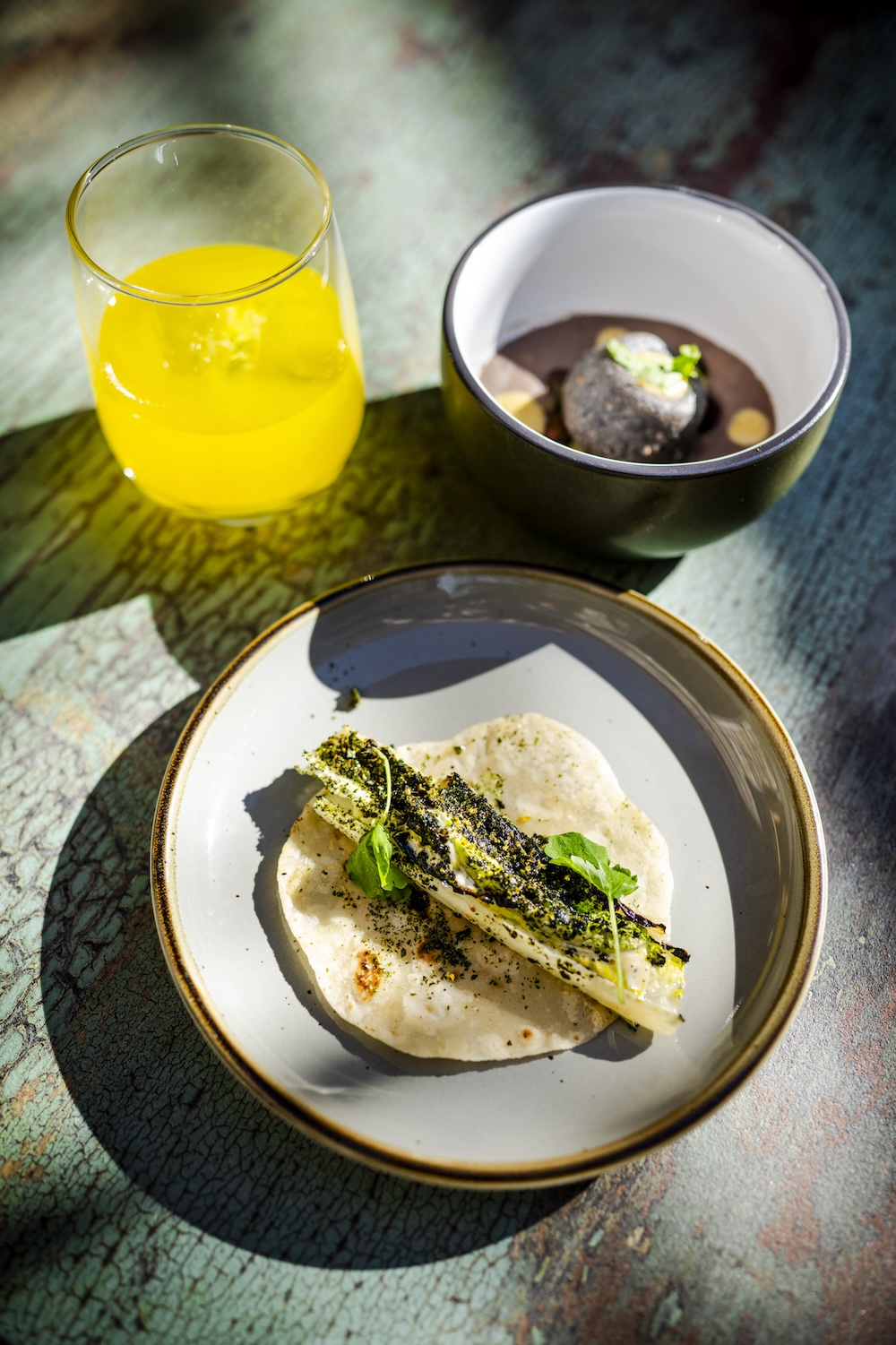
A Cinco de Mayo spread at Oro by Nixta / Credit: Travis Anderson
On trading paintings for tacos:
When [Oro by] Nixta was still a pop-up, we became takeout customers and I freaked out. The first taco I had from them, I was like, 'Dude, you're not a restaurant. You're an artist.'
They said, 'You know, we're opening a restaurant; you should put your art in here.' I said, 'Sure, let me look at your bathroom.'
It was this cute thing. They had painted their tiny bathroom with leftover paint from the trim — this beautiful dark blue color that turned it into a little black hole.

Part of Jimmy Longoria's final Oro by Nixta piece
I said, 'I'll tell you what; I'll paint your bathroom.' They said, 'Great. How much?'
‘Well, there are seven walls, and I start at five grand, so it'd be $35,000.' [Chef/co-owner Gustavo Romero] said, 'I don't have that kind of money.'
I said, 'I know you have zero money, but I work for food.' Then he said, ‘What does that mean?', and his wife [co-owner Kate Romero] hit him. 'It means he'll paint the bathroom; we just need to feed them.' I said, 'That's great. Let's do that.'
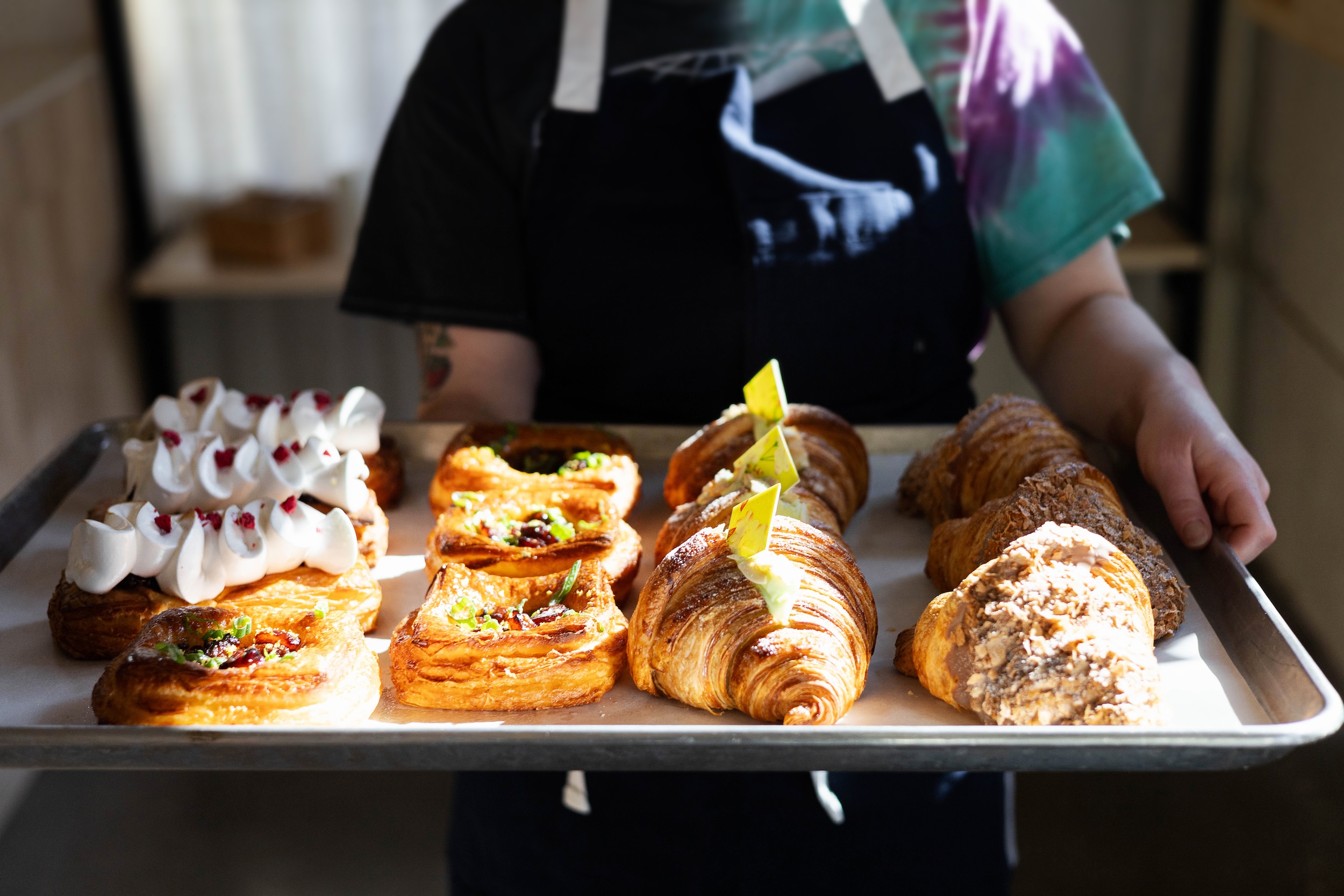
The pastry offerings at Diane's Place / Credit: Gemma Weston
On Diane Moua's brunch menu:
When [critically acclaimed pastry chef] Diane [Moua] opened her restaurant, I said, ‘We gotta go visit.’
We sat down and the waitress said, ‘Have you had a chance to look at the menu?’ I said, ‘We generally don’t look at menus. We like to let you tell us what we’re eating.’
That never fails, to be honest. Everything is great at her place. Her interpretation of a Vietnamese banh mi has this beautiful, flaky bun instead of the usual crusty baguette, the meat is grilled instead of cold, and there’s some kind of magic sauce inside. When I had it, I was like, ‘This is the way to do it.’
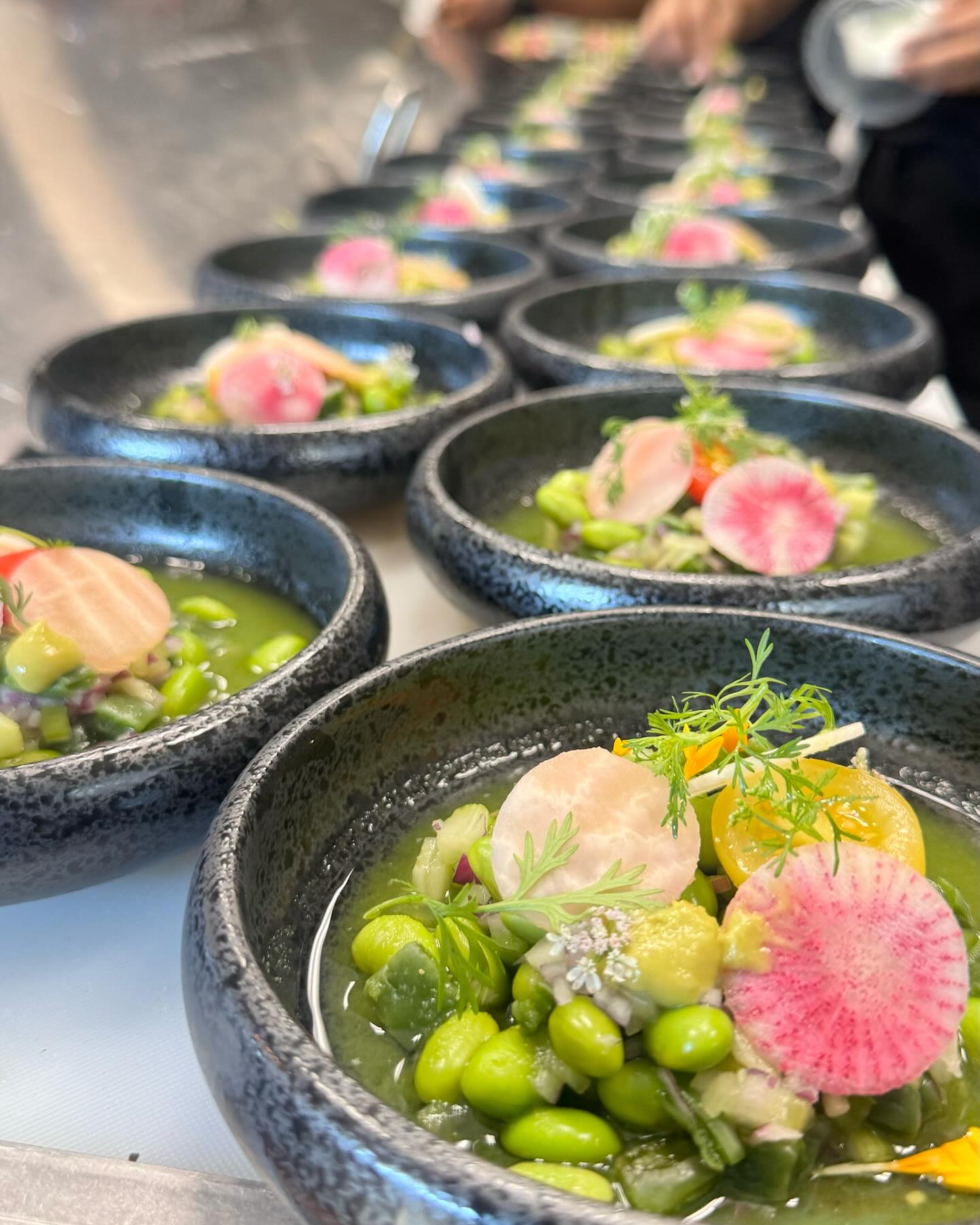
Nopales ceviche / Credit: El Sazon Cocina & Tragos
On our multifaceted restaurant scene:
When we used to visit New York, I was always envious that you could experience the world through its restaurants. But that's happening right here in Minnesota now, partly because of the major corporations that are here. We owe the sophistication of the food to businesses like 3M, Target and General Mills, and all of the world travelers who work for them putting a little pressure on the dining scene.
Like we had [cactus] ceviche at El Sazon the other day. Basically, they sliced raw cactus — nopalitos — and mashed it. Then they put it in lemon juice with spices, edamame, onion and cilantro. Vegetarian ceviche? That's insane! We’re excited for their new restaurant that’s opening in Stillwater — Xelas — because they’re doing artful dishes that’s a hybrid of Mexican and Guatemalan.

Freshly made corn tortillas / Credit: Oro by Nixta
What's happening right now is people are creating creative food all over the board. Now you can go and find all kinds of Salvadorian or Colombian food. Everybody winds up in the same place with masa, though. That's the brilliance of Nixta; they make their own masa. They bring in the corn itself, process it in house, and prepare it from there.
It's getting very interesting — all these people crossing over into each other's cultures. Our children are going to grow up in a world that's [Latino in] multifaceted [ways], not just Mexican.... It's exciting because it’s not just Old El Paso anymore.
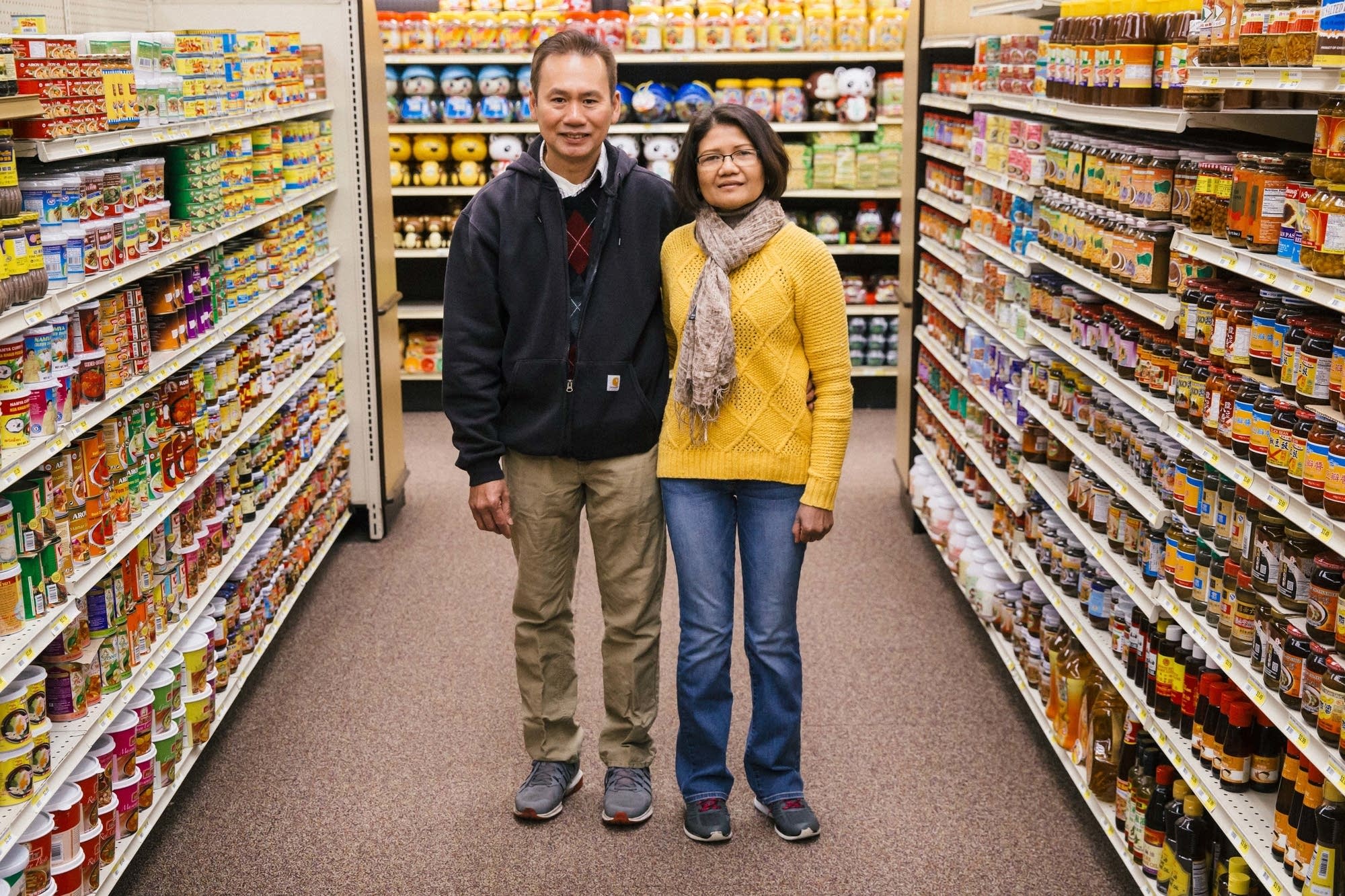
Ha Tien Market owners Ne and Son Daos / Credit: Evan Frost, courtesy of MPR
On specialty grocery stores:
One of my favorite places to shop is Ha Tien. It’s owned by a couple that's from Cambodia and Vietnam, but there are Mexicans from Veracruz in the fish market. If you want fresh fish, you need to go there. I think the produce is run by Mexicans and Peruvians, because they have all kinds of weird vegetables that are way cool.
Basically, you walk into this Asian food market with six kinds of kimchi and all this other stuff. I go there because I can get menudo fixings; you can get tripe, pig’s feet, beef, and big, giant bags of chilis.
You can also go there in the middle of winter and find produce that’s really fresh and ripe. I can get a whole pack of fresh nopalitos and do all kinds of things with it. We’re not just limited to buying cans of it anymore.

The farmers' market in downtown St. Paul / Credit: Leslie Anderson
On Hmong-led healthy competition:
We love going to farmers’ markets in Minnesota. Hmong farmers have upped the game for everybody, because they bring in vegetables that nobody else has. Then people respond, and it gets interesting. Suddenly, instead of it just being the same old zucchini, potatoes, celery and corn, you get different kinds of cabbage, radishes and yams.
Our favorite — which is hard to chase down, because they don’t do it consistently — are witch finger yams. They’re long, crooked and purple, and totally incredible. You cannot go wrong with them.... On the outside, it's got this strong, earthy, and then you move in and there's a little bit of sweetness and creamy yellowness. That's so not the other yams. We roast ours with olive oil on the outside and it’s like candy.

A stack of root vegetables at Mill City Farmers Market / Credit: Lois Cleland
It's amazing to see these Hmong farmers who rent awkward pieces of land on existing farms. There are other cash crops around them, but they grow the good stuff, bring it to market, get cash, and send kids to college that way. It's been that way for several generations.
Every once in a while, I'll see a kid wearing a [University of] Minnesota shirt at the market and say, 'What year are you?' 'I'm a graduate student.' 'And you still work the booth, huh?' That's beautiful.
Check out our Stars of the North series for more of Minnesota's best restaurants, shops and things to do.


